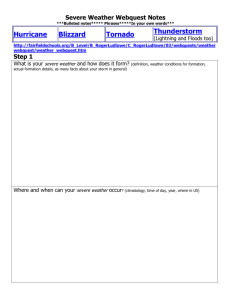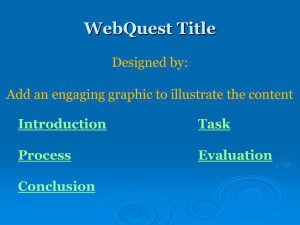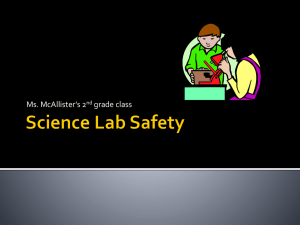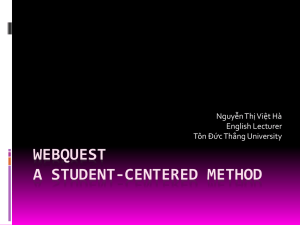Internet-Based Project Work
advertisement
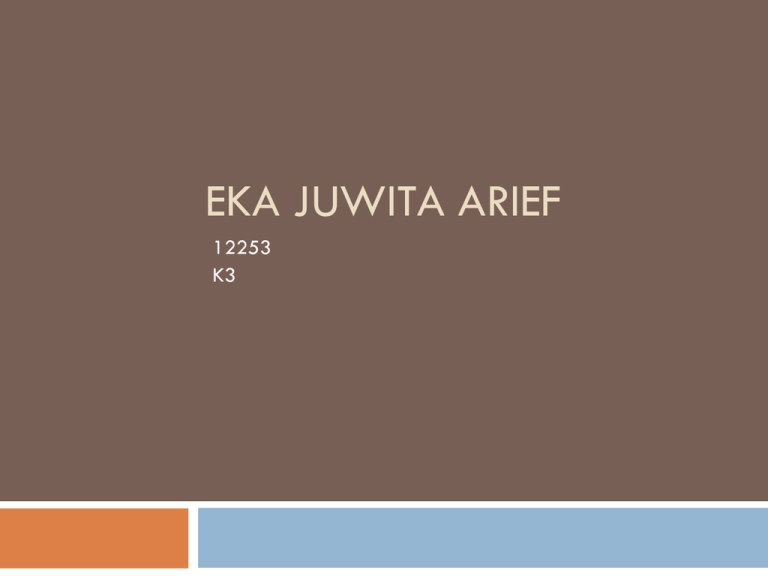
EKA JUWITA ARIEF 12253 K3 Internet-Based Project Work Why do Internet-based project work? It’s a structured way for teachers to incorporate the Internet into the language classroom. Cooperative learning and interaction are encouraged. Interdisciplinary purposes allow for cross-over into other departments and subject areas. Critical thinking is encouraged. Steps to prepare an IBPW: Choose the project topic. Make the task clear. Find the resources. Decide on the outcome. Internet-based simulations A Business English simulation A General English simulation You are planning a three-week trip to the United Kingdom. You’ll need to make arrangements for your transport and accommodation facilities beforehand. Remember that you’ll need to take pocket money too. Your total budget is £2500. You can visit the following websites: http://www.statravel.co.uk/cps/rde/xchg/uk_division_web_ live/hs.xsl/accommodation-in-great-britain-ireland.htm http://www.hostelbookers.com/hostels/england/ http://www.activehotels.com/hotel/en/unitedkingdom/engl and?subid=PPCGO8g2en WebQuests What is a WebQuest? It’s a mini-project in which a large percentage of the input and material is supplied from the Internet. It differs from projects or simulations in their fairly rigid structure. Types of WebQuest: Short-term WebQuest: Lasts a couple of classes. Longer-term WebQuest: Might last a few weeks, a term or even a semester. It has specific outcomes others can respond to. Example “Who Made my Trainers?” http://www.xtec.cat/cirel/02/webquests/english /2index2.html Tutorial Video: webquest.flv Links Skills set for producing a WebQuest: Research skills. Analytical skills. Word processing skills. The WebQuest design process: Exploring the possibilities stage: Choose and chunk the topic Identify learning gaps Inventory resources Uncover the question Creating your WebQuest stage Write the Web page/ Word Engage learners Scaffold thinking Decision: implement and evaluate Webquest Links http://webquest.org/index.php (inside the page you will find all the information that was presented in class) http://questgarden.com/search/ (the link of this page is included in webquest.org) http://www.nelliemuller.com/ESL_WebQuests.htm http://www.educationworld.com/a_tech/archives/webquest.sh tml Thesaurus In a thesaurus, you will find synonyms for words. First, you look up the word in the thesaurus. Next to the word you will find a list of words that mean the same things as the word you looked up. Like wonderful –great, magnificent, excellent, terrific, cool, and fantastic Also in a thesaurus you will find an antonym for the word. Like horrible or awful would be an antonym for wonderful. Dictionary We use a dictionary to look up words. You will find the meaning of words in a dictionary. For example, when you do not know the meaning of a word in a story. You may use a dictionary to look up the meaning of the word. THE BENEFITS OF EMAIL AND CHAT ROOM they allow learners to interact in an authentic context with native speakers without being restricted by location. Chat rooms can promote learner autonomy. students have the opportunity to observe the language used by native speakers. they allow communication to take place in real time. A sample text chat lesson plan Before the class 1. Make contact with the teacher of a similar class in term of level, class size and access to technology 2. Learners also need to be confident about how to use the chat program. 3. With the teacher of other class, set a time for the chat. 4. Try out with other teacher before class Class room management issues 1. Ideally learners are put in pairs for the first chat. 2. Learners can either conduct the cat in pairs, or consecutive learners can be allowed access to the same computer for a certain amount of time 3. Using voice chat rather than text chat in the single computer classroom During the cat 1. Provide hand out worksheet 2. Each learner has a slightly different worksheet 3. Asking questions on their worksheet 4. Print out their chat script and complete the worksheet from that, once the cat is finished. After chat 1. Display their profile in the classroom separately 2 Create learner profile in an inter-class blog
